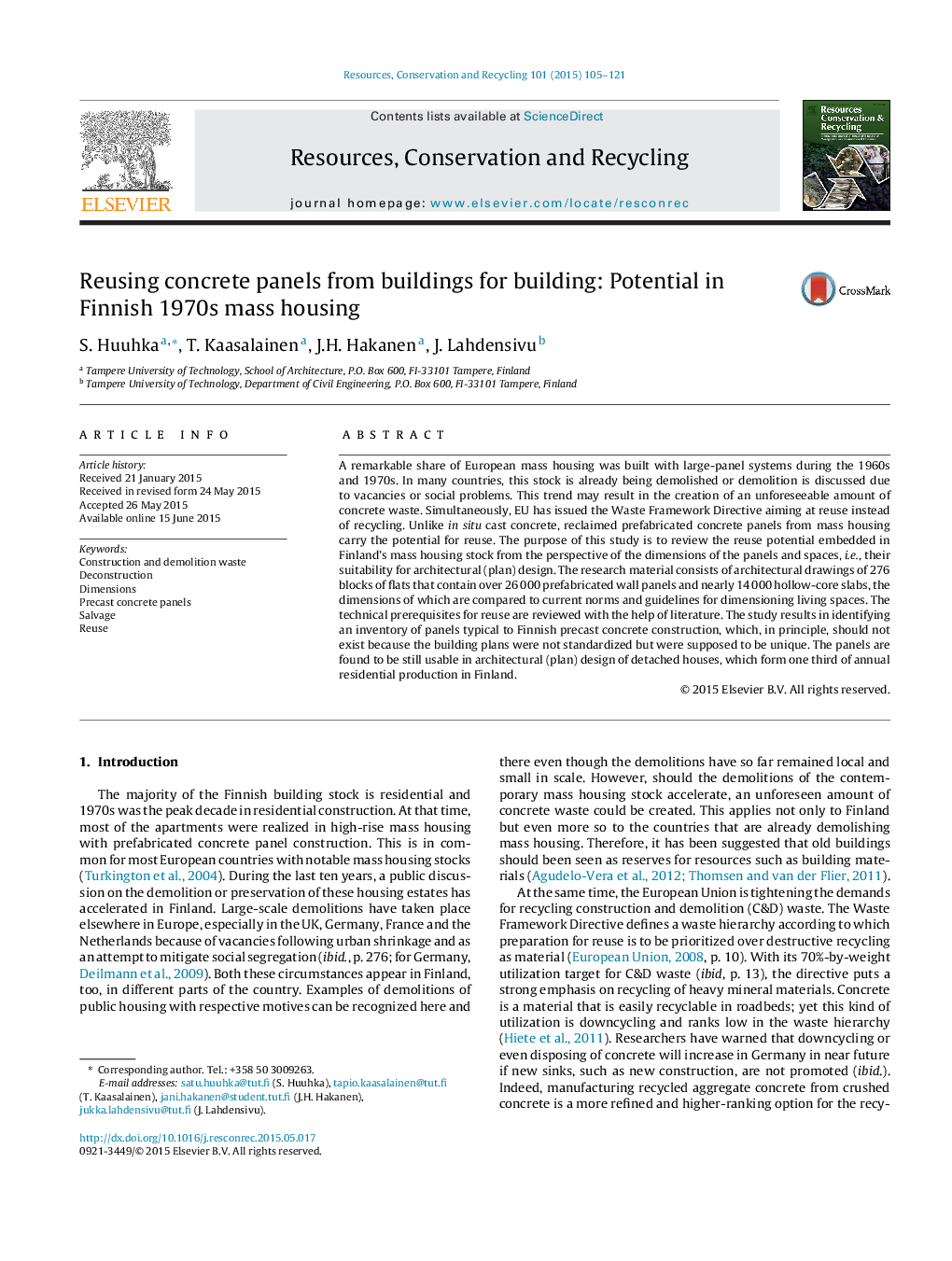| Article ID | Journal | Published Year | Pages | File Type |
|---|---|---|---|---|
| 7495116 | Resources, Conservation and Recycling | 2015 | 17 Pages |
Abstract
A remarkable share of European mass housing was built with large-panel systems during the 1960s and 1970s. In many countries, this stock is already being demolished or demolition is discussed due to vacancies or social problems. This trend may result in the creation of an unforeseeable amount of concrete waste. Simultaneously, EU has issued the Waste Framework Directive aiming at reuse instead of recycling. Unlike in situ cast concrete, reclaimed prefabricated concrete panels from mass housing carry the potential for reuse. The purpose of this study is to review the reuse potential embedded in Finland's mass housing stock from the perspective of the dimensions of the panels and spaces, i.e., their suitability for architectural (plan) design. The research material consists of architectural drawings of 276 blocks of flats that contain over 26Â 000 prefabricated wall panels and nearly 14Â 000 hollow-core slabs, the dimensions of which are compared to current norms and guidelines for dimensioning living spaces. The technical prerequisites for reuse are reviewed with the help of literature. The study results in identifying an inventory of panels typical to Finnish precast concrete construction, which, in principle, should not exist because the building plans were not standardized but were supposed to be unique. The panels are found to be still usable in architectural (plan) design of detached houses, which form one third of annual residential production in Finland.
Related Topics
Physical Sciences and Engineering
Energy
Renewable Energy, Sustainability and the Environment
Authors
S. Huuhka, T. Kaasalainen, J.H. Hakanen, J. Lahdensivu,
